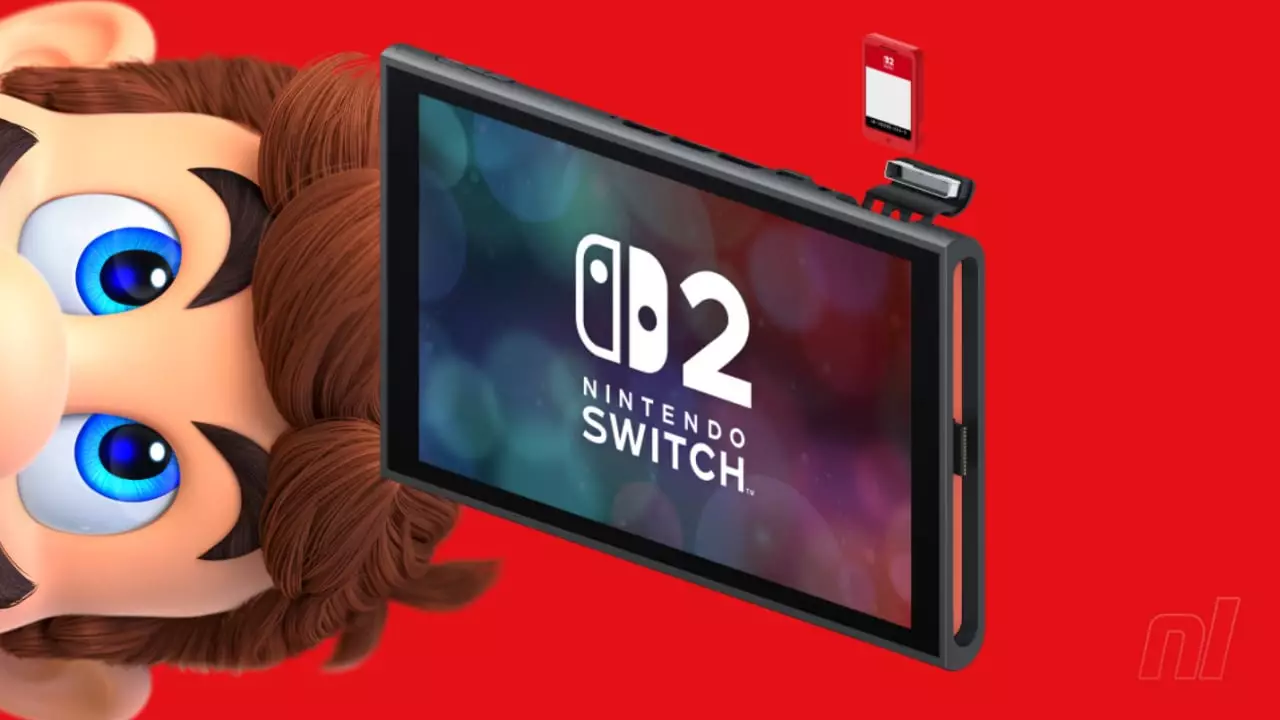In the ever-evolving world of video gaming, physical media has been a consistent point of passion and nostalgia for enthusiasts. However, Nintendo’s announcement of its new Game-Key Cards for the Switch 2 seems to herald an unwelcome shift in how we perceive and acquire games in the physical space. While the concept may have inspired a sense of potential innovation, upon closer examination, the details paint a picture far less compelling than what was anticipated.
Game-Key Cards, as outlined on Nintendo’s website, offer a facade of a classic gaming experience, but they betray the essence of what it means to own a physical game. Instead of housing the complete game data, these cards serve merely as glorified codes, necessitating gamers to download significant portions of the game online after inserting the cartridge. This muddled approach essentially dilutes the value proposition of physical media, replacing it with a model that promotes digital downloads while still expecting the tactile nature of cartridges.
Unpacking the Game-Key Card Concept
One might wonder about the impetus behind the creation of Game-Key Cards. The notion that a physical game can double as a key to unlock digital content might sound appealing at first. However, this idea flounders when the practical realities set in. Users must still have sufficient storage space on their Nintendo Switch 2 or an external microSD card to accommodate the downloaded data. This requirement renders the concept cumbersome, especially when players face the frustration of managing storage just to access their games.
To add insult to injury, Nintendo seems to have adopted a rather selective approach by limiting these Game-Key Cards to “some physical games.” This raises questions about which games will receive this treatment and whether consumers can expect consistency in their gaming purchases. Are enthusiasts to be resigned to a tiered experience where physical games suddenly necessitate a digital tether? This fragmented approach compromises the entire philosophy of physical ownership, leading many to ponder whether the Nintendo experience is indeed evolving for the better.
The Digital-Physical Blend: A Disheartening Trend
Nintendo’s Game-Key Cards epitomize a concerning trend emerging within the gaming industry—one that leans heavily toward hybrid digital-physical products while disregarding the sentiments of players who crave the authenticity of collecting original cartridges. While it’s understandable that developers and publishers want to avoid the financial burden associated with producing full-fledged physical versions of every title, creating a product that doesn’t deliver on its promise isn’t the answer.
Moreover, it’s worth noting that industry standards often create a buzz around physical releases only to follow them up with a significant Day One patch that ultimately transforms what was sold as a complete package into a mere shadow of its intended form. The Game-Key Card falls squarely into this category, as it risks pushing players toward a continuous cycle of updates and downloads, detracting from the immediate playability that physical games traditionally provide.
Embracing Disappointment: A Call for Authenticity
Gaming should, at its core, be about joy, immersion, and authenticity. Yet, the launch of Game-Key Cards serves as a wake-up call, revealing the increasing prevalence of cash-grab tactics disguised as innovation. It casts doubt on whether companies like Nintendo prioritize player satisfaction over regular revenue streams. The sentiment expressed among gamers – who value their collections, their history, and the ability to own a physical copy of a game – ought to spur companies to reconsider their strategies.
While it remains to be seen whether this new format will find acceptance, the absence of substantial advantages makes it challenging to believe that it will enhance the gaming experience. Moving forward, let us collectively advocate for a return to genuine physical media that respects and honors a culture built around real ownership—where gamers can trust that their collection serves its true purpose, rather than as a mere gateway to accessing associated digital content. As industry players, we all stand at a crossroads, and the decisions made today will shape the landscape of gaming tomorrow.


Leave a Reply